Laminate countertops have long been a popular choice for homeowners due to their affordability, versatility, and ease of maintenance. Over time, however, even the most well-cared-for laminate countertops can start to show signs of wear and tear. Remodeling these surfaces can breathe new life into a kitchen or bathroom without the need for a complete overhaul. This process involves a series of steps that can transform old, tired countertops into attractive and functional focal points of any room.
One of the primary reasons homeowners opt for laminate countertops is the vast array of colors, patterns, and textures available. This variety allows for creativity and customization in the remodeling process. When choosing new laminate for your countertops, consider the overall design and color scheme of your kitchen or bathroom. Modern laminates can mimic the look of more expensive materials such as granite, marble, or wood, offering a high-end appearance at a fraction of the cost. Additionally, newer laminates are more durable and resistant to scratches and heat, making them a practical choice for busy households.
Preparation is key when remodeling laminate countertops. Start by clearing the countertops of all items and thoroughly cleaning the surface. Any grease, dirt, or residue must be removed to ensure proper adhesion of new materials. A gentle cleaner or a mixture of mild soap and water can be used for this purpose. Once the surface is clean, inspect it for any damage such as chips, cracks, or areas where the laminate has lifted. Minor damages can often be repaired with laminate filler or adhesive, while more significant issues may require replacing the damaged sections entirely.
Removing the old laminate is the next step in the remodeling process. This can be done using a heat gun to soften the adhesive and a putty knife to carefully lift the laminate. Take care to avoid damaging the underlying surface. If the laminate is stubborn, it may help to work in small sections, applying heat and gently prying up the laminate. Once all the old laminate is removed, sand the surface lightly to remove any remaining adhesive and to create a smooth base for the new laminate.

Measuring and cutting the new laminate accurately is crucial for a successful remodel. Use a tape measure to determine the dimensions of your countertops, including any cutouts for sinks or appliances. Transfer these measurements to the back of the laminate sheet and use a straightedge and utility knife to score the laminate. Make multiple passes with the knife to ensure a clean cut. If you are not comfortable cutting the laminate yourself, consider having it cut professionally to avoid costly mistakes.
Applying the new laminate involves spreading a high-quality contact adhesive on both the countertop surface and the back of the laminate sheet. Allow the adhesive to become tacky, following the manufacturer’s instructions, before carefully positioning the laminate on the countertop. Use a roller to press the laminate firmly onto the surface, starting from the center and working outwards to remove any air bubbles. Trim any excess laminate using a router or laminate trimmer for a clean, professional edge.
Finishing touches can make a significant difference in the overall appearance of your remodeled laminate countertops. Apply edge banding to cover any exposed edges and give the countertops a polished look. This can be done using pre-glued banding and a household iron to activate the adhesive, followed by trimming the excess with a utility knife. Additionally, consider adding a backsplash or updating the existing one to complement the new laminate and tie the whole look together.
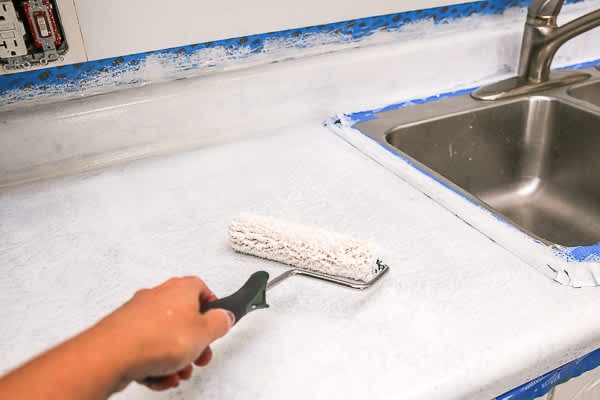
Maintaining your newly remodeled laminate countertops is essential to keep them looking their best for years to come. Regular cleaning with a non-abrasive cloth and mild soap will help maintain their appearance. Avoid using harsh chemicals or abrasive cleaners that can damage the laminate surface. Additionally, use cutting boards and trivets to protect the countertops from scratches and heat damage.
Laminate countertops offer a cost-effective way to update the look of your kitchen or bathroom. With a wide range of styles and finishes available, you can achieve the look you desire without breaking the bank. Whether you prefer a sleek, modern aesthetic or a more traditional look, there is a laminate option to suit your taste. Moreover, the remodeling process can be completed by DIY enthusiasts with the right tools and patience, making it an accessible project for many homeowners.
In addition to their aesthetic appeal, laminate countertops are known for their durability and ease of maintenance. They are resistant to stains, moisture, and impact, making them ideal for busy kitchens and bathrooms. However, they can be prone to scratches and heat damage if not properly cared for. By following simple maintenance tips, such as using cutting boards and trivets, you can extend the life of your laminate countertops and keep them looking new.
Another advantage of laminate countertops is their ease of installation. Unlike natural stone or solid surface countertops, laminate can be installed relatively quickly and without the need for professional installers. This makes it an attractive option for those looking to complete a kitchen or bathroom remodel on a tight timeline or budget. Additionally, laminate countertops are lightweight and can be cut to fit any space, making them a versatile choice for a variety of applications.
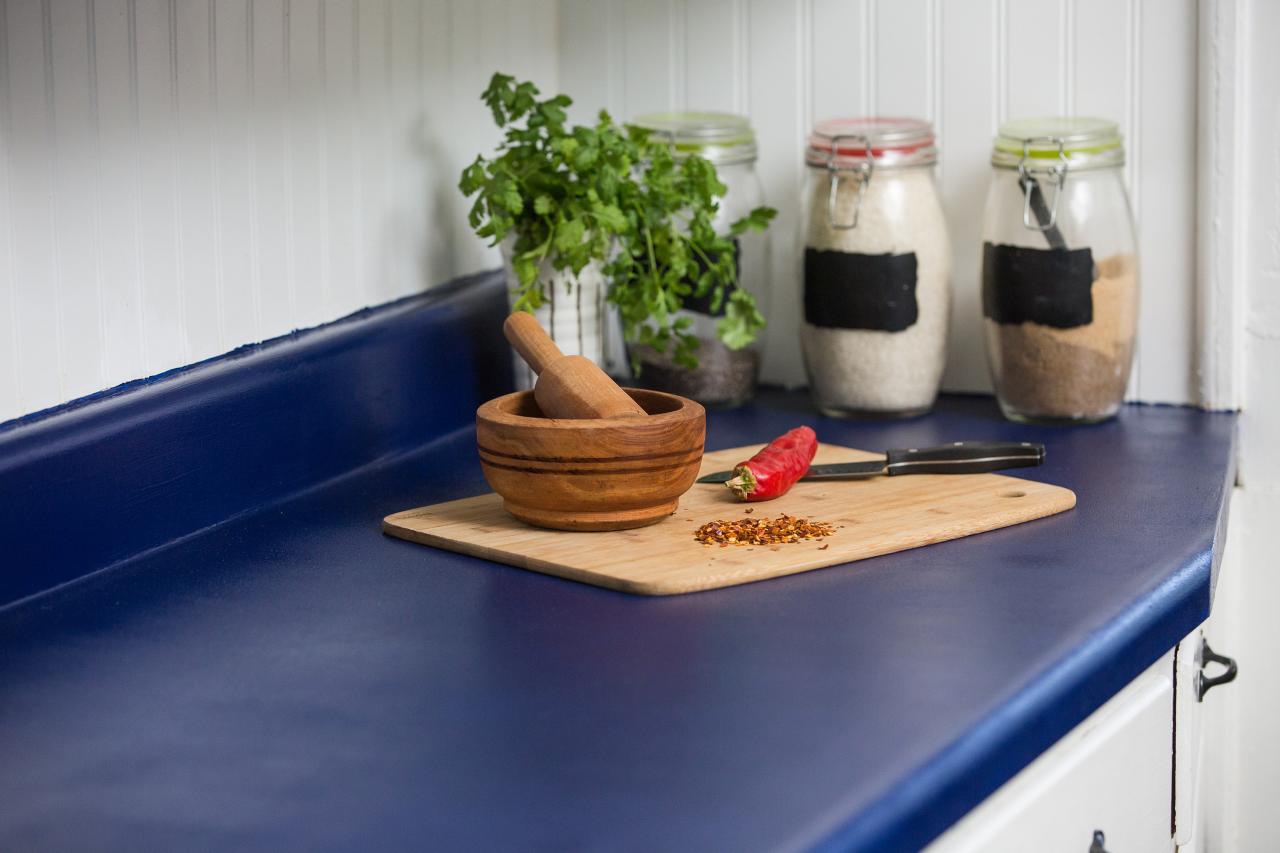
For homeowners looking to add a personal touch to their kitchen or bathroom, laminate countertops offer numerous customization options. Inlays, contrasting edges, and integrated backsplashes are just a few of the ways you can personalize your countertops to match your style. These features can be added during the remodeling process to create a unique and cohesive look that enhances the overall design of your space.
Sustainability is an increasingly important consideration for many homeowners, and laminate countertops can be an eco-friendly choice. Many manufacturers now offer laminates made from recycled materials and low-VOC adhesives, reducing their environmental impact. Additionally, the long lifespan and durability of laminate countertops mean they do not need to be replaced as frequently as other materials, contributing to a more sustainable home.
When planning your laminate countertop remodel, it’s important to set a realistic budget and timeline. While laminate is generally more affordable than other countertop materials, costs can vary depending on the specific laminate chosen and any additional features or customization. Be sure to factor in the cost of tools and supplies needed for the project, as well as any professional services if you are not comfortable completing the installation yourself.
Finally, consider the overall design and functionality of your kitchen or bathroom when choosing new laminate countertops. Think about how the countertops will be used and select a laminate that is both aesthetically pleasing and practical for your needs. For example, if you do a lot of cooking and food preparation, a durable, heat-resistant laminate may be the best choice. If you are updating a bathroom, a laminate that is moisture-resistant and easy to clean is essential.
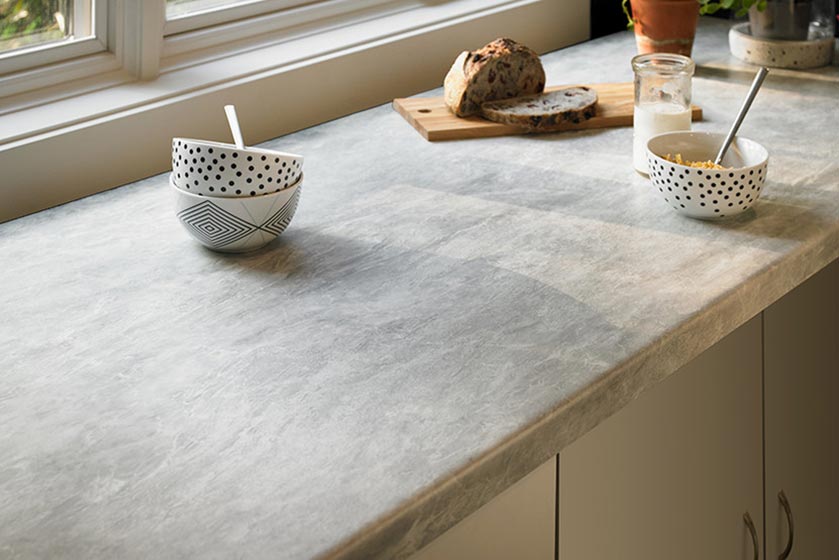
Common Mistakes to Avoid:
Using Inaccurate Measurements: One of the biggest mistakes is not measuring the countertops accurately. This can lead to poor fitting laminate sheets and a subpar finish. Always double-check your measurements before cutting.
Ignoring Surface Preparation: Failing to properly clean and prepare the surface can result in poor adhesion and bubbles in the laminate. Ensure the surface is clean, dry, and smooth before applying adhesive.
Applying Adhesive Incorrectly: Using the wrong type of adhesive or not allowing it to become tacky before applying the laminate can cause issues. Follow the manufacturer’s instructions for the best results.
Not Using the Right Tools: Using improper tools can damage the laminate or create an uneven finish. Invest in quality tools like a router or laminate trimmer for clean edges.
Skipping Edge Banding: Neglecting to apply edge banding can leave exposed edges that are unsightly and vulnerable to damage. Always finish the edges for a polished look.
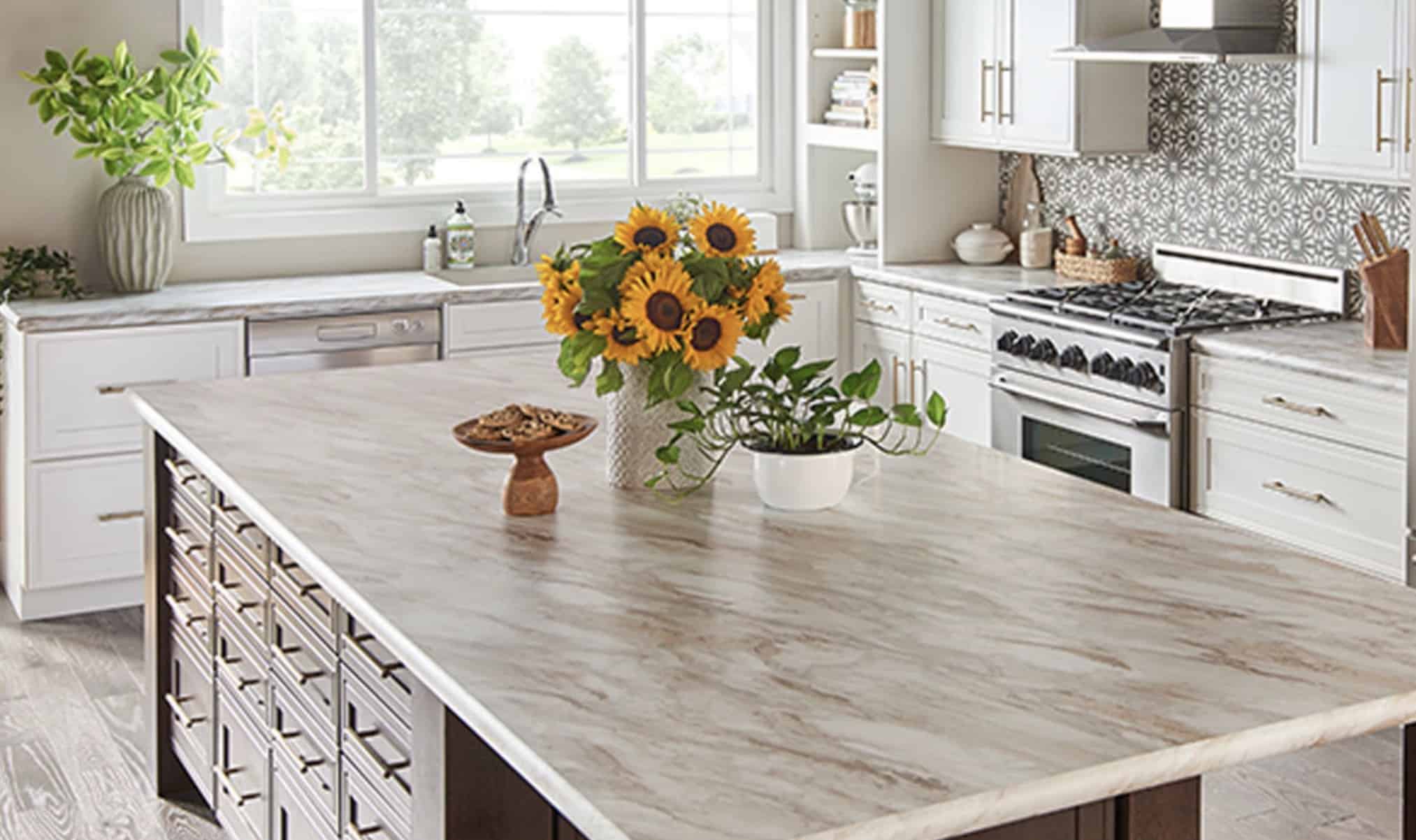
How do I measure my countertops for new laminate?
To measure your countertops for new laminate, use a tape measure to determine the length and width of each section, including any cutouts for sinks or appliances. Record these measurements accurately and double-check them to ensure precision. It’s also helpful to create a template or drawing of your countertop layout to guide the cutting process.
What type of adhesive should I use for laminate countertops?
Use a high-quality contact adhesive specifically designed for laminate surfaces. Follow the manufacturer’s instructions regarding application and drying times. The adhesive should be applied to both the countertop surface and the back of the laminate sheet, and it should become tacky before positioning the laminate.
Can I install laminate countertops myself, or do I need a professional?
Installing laminate countertops can be a DIY project for those with the right tools and patience. However, if you are not confident in your ability to measure, cut, and apply the laminate accurately, it may be worth hiring a professional to ensure a high-quality finish. Professional installation can also save time and reduce the risk of costly mistakes.
How do I maintain my newly remodeled laminate countertops?
Maintain your remodeled laminate countertops by cleaning them regularly with a non-abrasive cloth and mild soap. Avoid harsh chemicals and abrasive cleaners that can damage the surface. Use cutting boards to prevent scratches and trivets to protect against heat damage. Wipe up spills immediately to avoid staining and keep the countertops looking their best.
What are some design options for laminate countertops?
Laminate countertops offer a wide range of design options, including various colors, patterns, and textures. Modern laminates can mimic the look of natural stone, wood, or other materials. Customization options such as inlays, contrasting edges, and integrated backsplashes allow you to create a unique and personalized look that complements your overall kitchen or bathroom design.
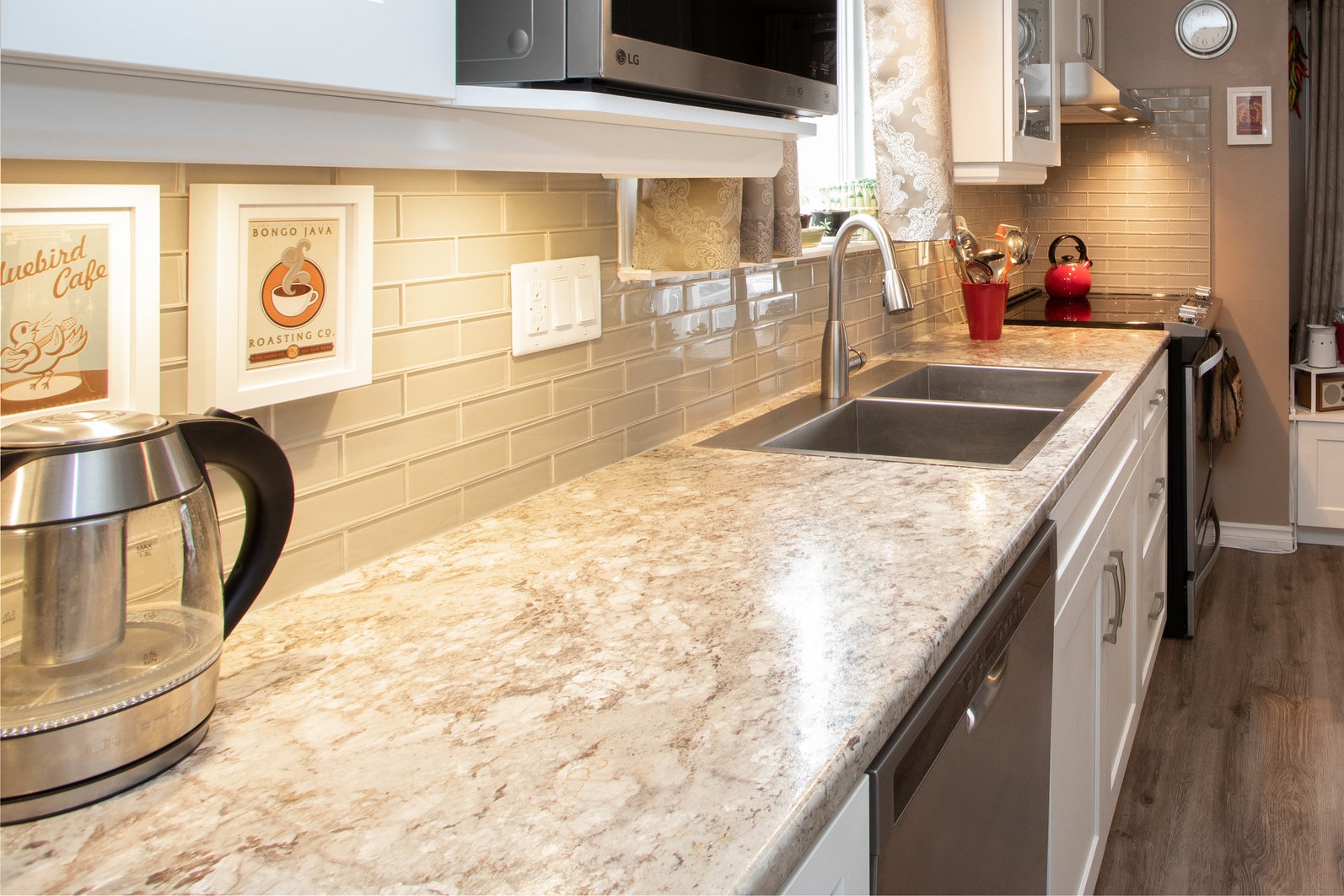
How my Painted Countertops Look After 3 Years of Use – Lovely Etc.
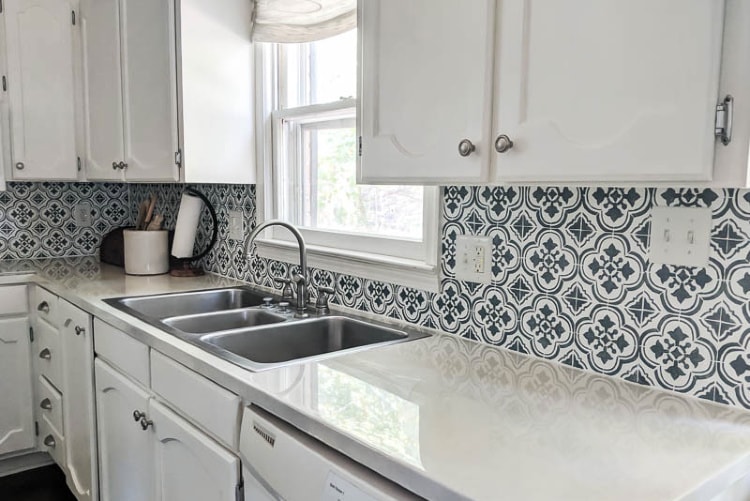
How to Paint Laminate Kitchen Countertops DIY

Laminate Countertops Pros and Cons of Installing Laminate

Easy Home Repair Hacks – Cover Up Laminate Countertops – Quick

Related articles:
- Laminate Countertop Ideas For Kitchen
- Dark Green Laminate Countertops
- Repair Laminate Countertop Edge
- Laminate Countertops In Bathroom
- Refinish Laminate Countertops DIY
- Laminate Countertop Cleaner
- DIY Concrete Over Laminate Countertops
- DIY Laminate Countertops Installation
- Formica Laminate Countertop Edges
- Applying Laminate Countertops